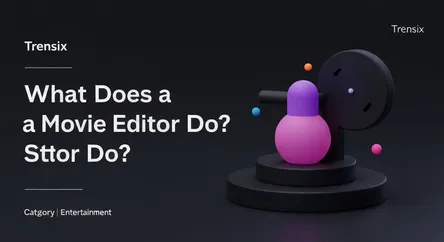Entertainment
What Does a Movie Editor Do?

Discover the crucial role of a film editor, the artist who pieces together shots to create a cohesive narrative, emotional impact, and cinematic rhythm.
What is it?
A film editor is a creative artist who works during the post-production stage of filmmaking. Their primary role is to assemble raw footage, sound, and visual effects into a finished movie. Working closely with the director, the editor makes critical decisions about shot selection, pacing, rhythm, and timing. They don't just cut scenes; they shape the entire narrative, constructing the emotional arc of the story and ensuring the final product is coherent and engaging. The editor's craft is often called the "invisible art" because when done well, the audience is completely absorbed in the story, unaware of the hundreds of cuts and choices made.
Why is it trending?
The role of the editor is gaining more public recognition, partly due to high-profile awards and acclaimed films where the editing is a standout feature, such as in action blockbusters or complex narrative dramas. Behind-the-scenes content on social media and streaming platforms often highlights the magic of post-production, demystifying the editing process for fans. As audiences become more cinematically literate, there's a growing appreciation for how skillful editing can create suspense, deliver comedic timing, or heighten emotional impact, turning a collection of shots into a powerful cinematic experience.
How does it affect people?
An editor's work directly manipulates the audience's perception and emotional response. By controlling the pace of scenes—using quick cuts for an intense action sequence or long takes for a dramatic moment—they dictate the film's energy. Editors build tension, surprise viewers, and guide their focus to specific details within a frame. They are the final storytellers, weaving together performances, sound, and visuals to create a seamless and immersive experience. The difference between a film that feels thrilling and one that drags is often the result of the editor's skillful hands, shaping how viewers feel long after they leave the theater.